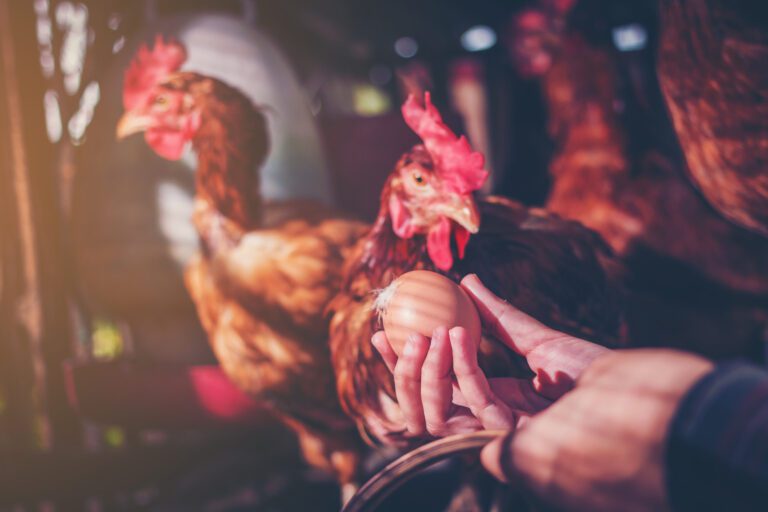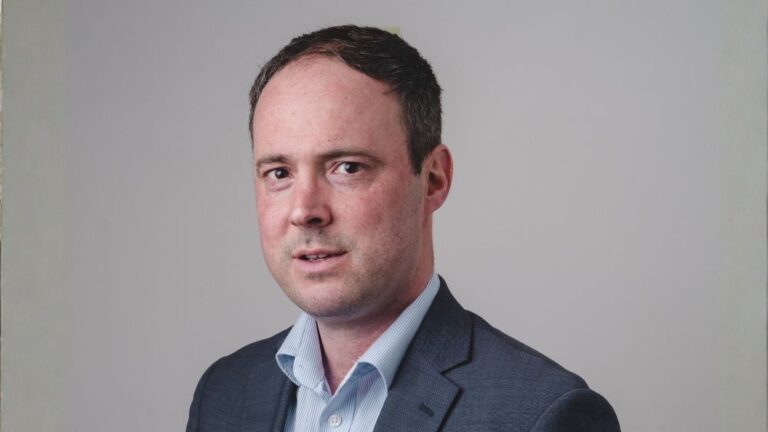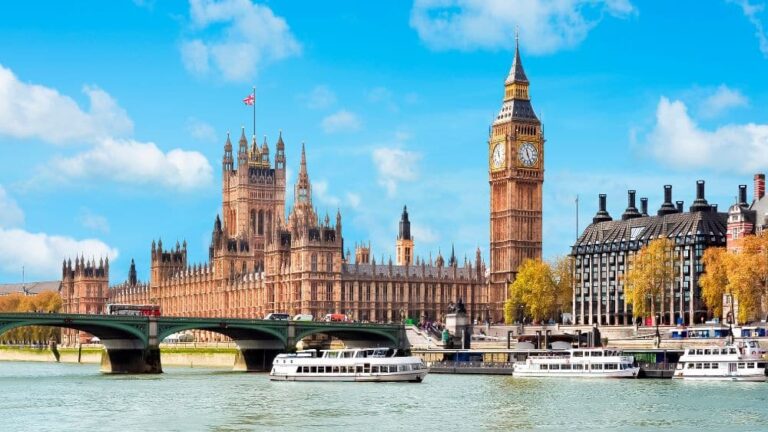
Succession planning: the longer-term impact of the Budget on businesses
This article was first published in Tax Journal.
Speed read: A restriction of agricultural and business relief for inheritance tax was announced in the Budget on 30 October. This policy is similar to the pre-1992 regime. In the last 33 years, tax advisers generally have not had to have a detailed working knowledge of these provisions and so have become de-skilled. Further, other tax changes since 1992 have created pitfalls for the unwary. This article explores those issues, including by way of a case study on a potential client scenario.
In my view, Rachel Reeves’s Budget on 30 October was short-sighted, misguided and foolish as far as businesses were concerned. The short-term impact of the measures will be hard for traditional businesses across the country to absorb and will limit entry level job creation and investment in towns that could be described as ‘run down’ or ‘left behind’. In large part, that is down to the increases in employers’ national insurance, but it is also the failure to reform business rates, reduce VAT for hospitality or cut stamp duty land tax rates. But it is what it is.
As well as the short-term impact, there is a longer-term impact on businesses as far as succession planning is concerned. The Budget contained a major reform to business property relief (BPR) and agricultural property relief (APR) in Chps I & II Pt V IHTA that businesses now need to plan for. This article is about that aspect of the Budget.
The modern history of inheritance tax and business property relief
Let’s start with a brief history lesson. In 1975, the Labour government introduced capital transfer tax (CTT). This was a lifetime tax on transfers of wealth – not just on death. It built on the foundations of an already very severe tax on death estates from the end of the First World War onwards, which, in Thomas Piketty’s view, was one of the factors that greatly reduced wealth inequality in the mid-twentieth century. At a more nuts and bolts level, every general practitioner accountant had to have a working knowledge of CTT. It was part of their everyday dialogue with business owners.
What happens next is important. First, CTT was consolidated into the Capital Transfer Act 1984. Then, in 1986, Nigel Lawson did three things:
- He created potentially exempt transfers (PETs). It limited CTT for most transactions to a seven year, rather than a lifetime tax. Crucially, even the seven-year period was only a look back (anti-forestalling in modern parlance). This changed the tax to something close to the predecessor, Estate Duty, regime.
- He introduced gifts with reservation provisions. This was designed to stop people from making gifts but continuing to benefit from them. For instance, giving away a business but continuing to receive a return from it.
- He renamed the Capital Transfer Tax 1984 as the Inheritance Act 1984. This last point is more important than you might first think. Most of the Act is just as it was originally drafted for CTT. The introduction of PETs fundamentally changed the tax for individuals (although not trusts), but it is an overlaid change, underneath, it is the late 1970’s tax regime.
After 1986, APR and BPR were available but only at a maximum rate of 50%, with a 30% rate where the shareholding was below 25%.
The key actor in my story is now John Major. He played a blinder and unexpectedly won an election in 1992 with a promise of the “cascade of wealth between generations”. The election had been called on the back of an increase in the rates of APR and BPR to 100% in the majority of circumstances.
The consequence of this, and the starting premise of my analysis, is that from 1992 onwards, progressively, general practitioners and tax advisers didn’t need to know much about inheritance tax (IHT) and businesses. Most businesses qualified for BPR, and typically lifetime gifts qualified for capital gains tax (CGT) hold-over relief.
Investment businesses don’t qualify for BPR and tellingly, from the 1990s onwards, BPR became the most litigated aspect of the IHT legislation, as first caravan parks and then holiday lets, amongst others, have challenged the position. That experience suggests that IHT on death matters to business owners.
It took a while longer for 100% APR to become commonplace because of the longer qualifying holding period in many cases (seven years versus two years for BPR) and the need to unpick arrangements that were entered into during the 1970s and 1980s to limit the value of farms subjected to tax. The introduction of farm business tenancies (FBTs) and the tax legislation on them from 1995 in section 116 IHTA made a big difference.
As far as lifetime gifts of businesses are concerned, then hold-over relief is probably not as widely available as first thought because of post-2002 goodwill not being a chargeable asset. There is a restriction where there are non-chargeable business assets in accordance with para 6, Sch 7 TCGA. If good will is not a chargeable asset then it means that the denominator is smaller. Increasingly, many accountants and tax advisers have advised against lifetime gifts, possibly because of CGT issues on a gift but also because of the value of the CGT probate value uplift on death. This has delayed succession which probably isn’t a good thing commercially.
Rachel’s Halloween horror
Despite expectations that his government would reverse 100% BPR and APR, Tony Blair didn’t go near it, and neither did Gordon Brown. The tax revenue wasn’t seen as significant enough and Neil Kinnock (who lost to John Major in 1992) probably told them not to bother.
Up to 2007, general practitioners were still involved in IHT planning as far as ensuring wills included nil rate band (NRB) trust clauses, but after the NRB became transferable, that became academic. The NRB did increase until 2009 but has been frozen at £325k since then. This change further de-skilled owner managed business tax professionals.
It seemed likely that the Coalition government after 2010 might restrict the reliefs, but it never did. After 2015, a restriction of APR always seemed possible but would most likely only have aggravated splits within the Conservative party – so the status quo remained. Whilst the NRB remained frozen, the absurdly complex residence nil rate band (RNRB) was introduced. By then, general practitioners had stepped away from IHT planning and the RNRB at a maximum of £175k was too small and too complex to capture the imagination.
Even if the Conservative government had wanted to restrict APR and/or BPR, there are practical problems with restricting them. The tax isn’t easy to collect, and as Emma Chamberlain of Pump Court Tax Chambers has previously remarked, the economic return from agricultural land isn’t high enough to fund the tax due. It all seemed too hard to be worth the bother interfering with, especially as some politicians were calling for IHT to be abolished. Why go near it?
Enter Rachel Reeves. She and the new Labour government have gone there. After more than 30 years, they have largely reversed the 1992 extension of the reliefs. Notably though, the proposed new rules from April 2026 will still be much more lenient than the pre-1992 regime because of the £1m 100% allowance. Qualification for relief is also less restrictive than it was 33 years ago.
There is much that businesses can do, and now need to do. The trouble is that you have to be pretty much as old as me to have studied and practised tax prior to 1992. Consequently, there has been a collective memory loss amongst tax professionals. The remainder of this article focuses on the impact of this change and the practical steps that advisers can consider now. Whilst the new rules apply from April 2026, as they will capture gifts from 30 October, they are effectively already in place as anti-forestalling rules apply on gifts. Quite how those will work within the legislation remains to be seen as we lack the details.
Enter the adviser
Whilst we need all the details to be able to advise properly, that doesn’t mean that advisers should be sitting on their hands. We know enough to get the ball rolling now as in any case, succession discussions always take a long time. If you’ve spent decades building up a business, then it’s hard to give up ownership. Also, families are complex and have many dynamics. These two factors alone lead to hesitancy even before one considers the financial aspects.
What will the new rules be, as far as we know at the moment?
- The new regime only applies to deaths after 5 April 2026 and to lifetime gifts within seven years of death, if on or after 30 October 2024. Gifts on 29 October 2024, or prior to that become chargeable on death, remain within the old regime – so the transitional period runs to 29 October 2031.
- Each individual and relevant property trust is limited to a maximum claim in respect of 100% relief for APR and/or BPR of £1m. Trusts created after 30 October 2024 by the same settlor share a £1m limit between them. Above that allowance, relief is restricted to 50% regardless of whether it would otherwise qualify for 100% relief.
- It is unclear whether the £1m limit will refresh after seven years if it has been utilised. To my mind, it would be odd if it didn’t, but we don’t know the approach that will be adopted at the moment. Gifts into trust (chargeable lifetime transfers, or CLTs) could be treated differently to gifts to individuals (PETs) although that could have perverse incentives. On top of that, I wouldn’t want to bet on what the UK’s IHT regime will be in 2032.
- We are told that the £1m allowance will not be transferable between spouses and civil partners. That seems peculiar, and if that doesn’t change, then advisers will be forced back into the pre-2007 approach to the NRB. The well advised would get maximum relief, but they would have to pay for the privilege, and others would lose out. That’s not helping fairness in the tax system.
- Pension funds will be included within taxable estates for IHT purposes from April 2027. That will be a very significant change for many wealthy business owners and will greatly increase their IHT exposure. Whether self-invested personal pensions (SIPPs), small self-administered schemes (SSASs), or others could qualify for the £1m allowance is not yet clear, but intuitively, it would feel that they should as they are a form of trust.
- We know very little about how the new rules will work for trusts going forwards. We can probably guess how the entry, exit and 10-year charges will work, but that isn’t a basis for proper advice and we need the policy detail before one can feel confident on the trust planning options. The key question is about whether the £1m allowance will refresh after seven years. If it doesn’t, then that would limit trust planning options.
Outlook for PETs
The government is rolling back the APR/BPR regime to something closer to the pre-1992 rules. It does not suggest the reversal of the transferability of the NRB, although the current proposal is that the £1m allowance won’t be transferable, which seems odd. The transferable NRB was a Labour government measure that was introduced in 2007, but it doesn’t seem to be being embraced by the current Labour Chancellor. The continued freezing of the NRB feels like a desire for inflation to do the government’s dirty work for them in terms of increasing the tax burden on death estates.
Given this context, what, then, is the outlook for PETs? It has been suggested that this government could extend the time period from seven years. Under estate duty, it progressively increased over 75 years from an initial three-year period to seven years. Given that pattern, it could be increased again. Alternatively, could the government be considering a cap on PETs – maybe £1m?
The outlook for IHT definitely feels like a more restrictive and higher tax regime.
Capital gains tax on gifts?
You could be forgiven for thinking that the way to avoid IHT on death is to gift the assets concerned whilst alive, as there is a hold-over relief for business assets in s.165 TCGA. However, that section has deficiencies that have become more apparent as time has gone on.
1989 was not just the year of Taylor Swift’s birth, it was also the year when general hold-over relief on all gifts was restricted to only business assets. That’s worth reflecting on for a moment. There was only a three-year period when we had APR and BPR at a maximum of 50% and had the current business asset hold-over provision that is now in s.165. In addition, in 1989, all gains were re-based to 1982 values, and an indexation allowance was available to counter inflation.
The CGT outlook in 2025 looks very different. The removal of goodwill post-2002 from the CGT regime has a potentially adverse impact on s.165 relief, and other deficiencies with the relief have become apparent over the last 36 years. It needs to be more generous and requires a fundamental re-write. To that extent, the ending of the government’s Tax Law Re-write project, that gave us new tax legislation between 2001 and 2010, but as part of austerity measures has left TCGA and IHTA not being re-written and increasingly dated.
There is an alternative hold-over relief under s.260 TCGA, which applies on a gift into a settlement. That hold-over relief is not subject to the same restrictions as s.165 but there will be an IHT entry charge from April 2026 if the value of the shares (or other assets) transferred exceed the available 100% APR/BPR relief and NRBs.
Where company shares are being gifted, it is necessary to consider s.19 TCGA as well. This concerns gifts that form part of a series of linked transactions with connected persons within a six-year period. This doesn’t have to be gifts of shares to the same individual, and can include gifts into trust as well. The value of the shares gifted for CGT purposes is on the basis of the size of the shareholding gifted, including after taking account of any appropriate minority discount for the size of the shareholding concerned.
If there is a subsequent gift of shares within six years of the original gift, then the value of the shares gifted must be on the basis of the combined holding. This can mean that the value of the first gift is increased with additional CGT possibly due. This legislation seems inconsistent with self-assessment – but then it pre-dates that and has never been revised. It’s just another bear trap to be aware of.
It is also important to ensure that the gift is not caught by the employment related securities rules. The exclusion in s.421B(3) ITEPA applies where it is a gift of shares by an individual to another individual and occurs “in the normal course of the domestic, family or personal relationships”. This exception would not apply if there was a new issue of shares.
It is likely to be relatively easy to show that the transfer is by reason of “domestic, family or personal relationships” where the gift is to a child, but there is more scope for uncertainty where the gift might be to a son or daughter in law, niece or nephew or a cousin and they are employed by the company concerned.
There is a patchwork of different tax reliefs and considerations applying on a gift of shares where succession planning is concerned, and the tax regime does not feel particularly friendly towards family businesses.
Reservation of benefit
One of the other tax considerations is a gift with reservation of benefit (GROB). Where the lifetime gift of an interest in a business is concerned then it is important that the arrangement is commercial and reasonable in order to avoid a reservation of benefit under s.102 FA 1986. IHTM14337 for instance states:
“What is ‘reasonable’ will depend on all the facts but, broadly, you should test this by reference to what might reasonably be expected under arm’s length arrangements between unconnected parties.
If, however, as part of the overall transaction, including the gift, new remunerative arrangements are made you will need to examine all the facts to determine whether the new package amounts to a reservation ‘by contract or otherwise’.”
The tendency towards avoiding lifetime succession and dealing with transfers on death has avoided the need to have to consider GROBs. That position is now going to alter.
What does this mean for advisers now?
My thesis above is that those advising businesses on tax have been de-skilled over the last 33 years and commercial practices, examination syllabuses and lobby groups all adjusted to a tax regime that largely excluded businesses and agricultural land from IHT. That’s now going to have to chance and it won’t be an easy adjustment. It will take time and we just don’t have time on our side.
The failure of the government to publish a detailed technical note alongside the budget day documents on 30 October was unacceptable and has meant that the government has failed to control the narrative since. The fact that tax specialists on capital taxes have been tied up on the non-dom changes and not had much bandwidth for the APR/BPR changes is indicative of my central thesis (maybe also within HMRC). We really need the supporting detail behind the policy including draft legislation.
Finally, the deficiencies in the CGT hold-over legislation are now being exposed more visibly by the restriction of APR/BPR.
Given that many shareholders have retained their shares with the intention of passing on on death and that many are now of very advanced years, then time is of the essence. If the answer is likely to be seven-year survival then many owners are likely to be best advised to make a gift of shares sooner rather than later. A gift into trust might be a good strategy but that is complex planning and the absence of technical detail limits that as an option.
In order to highlight the issues, let’s consider a case study – Arthur’s Farm Limited.
Case study – Arthur’s Farm Limited
The scenario
Wendy owns 100% of the shares in Arthur’s Farm Limited. Wendy is a widow and her husband, Arthur, died in 2010. Wendy is 77 years’ old and in good health. Wendy has two daughters, Lindsay and Leah, both of whom work in the business. Leah now manages the cheese business, although Wendy continues to be closely involved. Lindsay and Leah are both married with children.
Arthur was a dairy farmer and Wendy and Arthur incorporated Arthur’s Farm Limited in the late 1970s. 1,000 £1 ordinary shares were issued on incorporation and owned 50:50 by Wendy and Arthur. These shares were worth £100k on 31 March 1982. Arthur’s shares were valued at £4.95m on his death, when his entire estate passed to Wendy.
By 1990, the company had built up a landholding of around 200 acres of farmland, a traditional and fairly modest farmhouse and a dairy herd. In the 1990s, the company incurred losses due to the low milk price offered by the supermarkets and decided to diversify.
In the mid-1990s, some redundant farm buildings were converted into a holiday letting complex of six letting units with owner’s accommodation. Lindsay operates this business and lives in the accommodation provided and that is required for the proper performance of her duties.
Then, in order to try and increase the value obtained for the milk being produced, in the late 1990s, the company started producing cheese, branded as Wendy’s cheese. After a choppy start, this became a successful cheese company supplying a couple of supermarket chains. Increasingly, Wendy and Arthur focused on the cheese business and less on the dairy farm. The farm withered, and after Arthur’s death, the herd was sold to a neighbouring farmer and the farmland let to the same farmer on a FBT.
Wendy continues to live in the farmhouse, which has a modest benefit in kind as the original value is less than £75k. The old farm buildings near the farmhouse had originally been converted to be the dairy, warehouse and offices for the cheese business. As Wendy’s cheese company grew, it re-located to purpose built premises on an industrial estate close to the farm. The converted farm buildings were then let to a wedding events business that is unconnected with Wendy and her family.
In 2016, in an attempt to avoid over-dependence on the supermarkets, Arthur’s Farm Limited bought an aviation food supplying business, Airways Foods. The thinking was that this provided a different distribution channel for Wendy’s cheese products.
Airways Foods was purchased as a standalone business for £1m by a newly incorporated subsidiary of Arthur’s Farm Limited. At the same time, the existing Wendy’s cheese business was hived down into another newly incorporated subsidiary company. The parent company retained ownership of the let farmland, the holiday let complex, let buildings and Wendy’s home.
The group is now worth around £18m. On a consolidated basis, this can be broken down as follows:
| £m | |
| Let farmland – (agricultural value of £2m) | 3.0 |
| Holiday let complex | 2.0 |
| Buildings let to weddings event business | 0.5 |
| Farmhouse | 0.5 |
| Plant & machinery | 1.0 |
| Original Wendy’s cheese company goodwill – pre-2002 goodwill | 5.0 |
| Airways business goodwill – post 2002 goodwill | 4.0 |
| Net working capital | 2.0 |
| 18.0 |
Apart from her shares in the group, Wendy has about £250k of cash and other personal assets and a pension fund worth about £500k.
Wendy has always been comfortable with her home being owned by the group as it was a very IHT efficient arrangement. Her concern has always been to protect the business in order to pass on the wealth that Wendy and Arthur have built up over time. They have always tried to plough all the profits back into the business and lived modestly, considering their wealth.
Wendy is alarmed by the Budget on 30 October. Her understanding was that previously there was no exposure to IHT on her estate. On that basis, she has understood that the best thing to do would be to retain the shares and pass them to her daughters on her death. She had also understood that there would be CGT if she tried to gift her shares in her lifetime.
What is the impact of the Budget on her death estate?
Whilst we don’t have all the details, based on the information released to date, should Wendy die after 5 April 2026 still owning the shares then at the current values the IHT arising would be over £3.2m, as arrived at below:
| £k | £k | |
| Value of shares in Arthur’s Farm Limited | 18,000 | |
| BPR – £1m at 100% | 1,000 | |
| BPR – £17m (shares assumed fully qualifying) at 50% | 8,500 | |
| Total BPR | (9,500) | |
| Value after BPR | 8,500 | |
| Other assets | 250 | |
| Nil rate bands – NRBs (x 2) | (650) | |
| Taxable estate | 8,100 | |
| IHT at 40% | 3,240 |
Wendy’s potential IHT liability will increase by a further £200k in April 2027 when her pension fund becomes liable to IHT on death.
Whilst the tax liability of £3.2m could be paid by instalments interest-free over 10 years, as there are no funds to settle this tax liability outside of the Arthur’s Farm Limited group, the funds to pay the tax would have to be extracted from the company each year. If that was done by way of dividends then there would be an income tax liability on the money used to pay the IHT. In which case the £320k grosses up to a dividend of £528k (using a 39.35% rate).
There is the possibility of a purchase of own shares under s.1033(3) CTA 2010 and taking advantage of Condition B where the proceeds are applied in paying IHT. However, this option only applies where the IHT is paid within two years of the date of death which doesn’t allow for payment by instalments over 10 years.
What could Wendy do?
Wendy suggests that she could gift her shares equally to Lindsay and Leah. Her base cost of her shares is £5m (March 1982 value of £50k plus probate value of £4.95m). This means that there is a gain on the shares of £13m.
Whilst Arthur’s Farm Limited would qualify for s.165 hold-over relief as the holding company of a trading group (s.165A TCGA). Unfortunately, s.165 hold-over relief is restricted in accordance with Sch 7 Pt II TCGA where there are investment assets.
| Total
£m |
Chargeable
Asset £m |
Chargeable Business Asset
£m |
Not a Chargeable Asset
£m |
|
| Let farmland (agricultural value of £2m) | 3.0 | 3.0 | ||
| Holiday let complex | 2.0 | 2.0 | 2.0 | |
| Let buildings | 0.5 | 0.5 | ||
| Farmhouse | 0.5 | 0.5 | 0.5 | |
| Plant & machinery | 1.0 | 1.0 | 1.0 | |
| Original Wendy’s cheese company goodwill | 5.0 | 5.0 | 5.0 | |
| Airways business goodwill | 4.0 | 4.0 | ||
| Net working capital | 2.0 | 2.0 | ||
| 18.0 | 12.0 | 8.5 | 6.0 |
The available hold-over is restricted to 70.83% (CBA/CA).
- The holiday letting complex, unless it is a trade in its own right, will cease to qualify from 6 April 2025, the hold-over relief will be restricted to 54.17% because the complex currently qualifies under the extension to qualifying furnished holiday letting properties by virtue of s.241 TCGA. This extension is being withdrawn on 6 April 2025 (Finance Bill). There is no time apportionment for the period when an asset did qualify. The CBA/CA restriction in para 6 is that applying as at the date of disposal.
- The let farmland qualifying for APR is eligible for s.165 hold-over as the relief is extended by Sch 7 Pt I TCGA. However, that extension does not appear to turn the let farmland into a business asset, as para 6(2)(a) defines business assets as being those used in a trade. Whilst the position on the farmhouse is not clear-cut, on the basis that it is an asset provided to Wendy as a director and subject to the benefits in kind legislation, then it could be viewed as a business asset.
- The Airways business goodwill is post-2002 goodwill, and so is not a chargeable asset for CGT purposes, and as such it is ignored in this calculation.
It would appear that Wendy has not utilised her business asset disposal relief (BADR) and so £1m of a gain on the shares could be taxed at 10% prior to 5 April 2025. Any gain in excess of £1m would be taxed at 24%.
On a gift of all of the shares, there would be a gain of £3.8m. That would give rise to a CGT liability of £770k on a gift of all of the shares.
| £k | £k | |
| Deemed proceeds | 18,000 | |
| Base cost | (5,000) | |
| Gain | 13,000 | |
| Hold-over relief under s.165 – 70.83% | (9,208) | |
| Gain after hold-over relief | 3,792 | |
| CGT arising: | ||
| BADR – £1m at 10% | 100 | |
| Main rate – £2,792k at 24% | 670 | |
| 770 |
Wendy does not have the cash funds to meet this CGT liability. Even if she took the tax free cash from her pension fund then she still wouldn’t have sufficient cash funds to pay the CGT arising. The CGT could be settled by instalments, but interest would arise and that wouldn’t generate any more cash for Wendy.
Looking at IHT, if Wendy made a gift of all of her shares, then after 5 April 2026, the PET value after BPR and her own NRB would be £8,175k (£8,500k less £325k). The transferable NRB cannot be used on a lifetime gift. At 40%, the IHT liability would be £3,270k (so higher than the expected liability on the death estate).
Taper relief would apply to the IHT payable if she dies more than three years after the date of the gift, in accordance with s.7 IHTA. If a gift took place on 5 April 2025, then the IHT due on her death would be as follows:
| Death during | IHT liability before taper relief
£k |
Taper relief
% |
IHT liability due after taper relief
£k |
| 2025/26 | Nil | 0% | Nil |
| 2026/27 | 3,270 | 0% | 3,270 |
| 2027/28 | 3,270 | 0% | 3,270 |
| 2028/29 | 3,270 | 20% | 2,616 |
| 2029/30 | 3,270 | 40% | 1,962 |
| 2030/31 | 3,270 | 60% | 1,308 |
| 2031/32 | 3,270 | 80% | 654 |
| 2032/33 | Nil | N/A | Nil |
Should Wendy die in the first year, then Lindsay and Leah would be worse off as they would not benefit from the probate value uplift and CGT of £770k would have been incurred. On a death in the next two years, Lindsay and Leah would be considerably worse off because the full IHT would be due, with no probate value uplift and with the CGT liability having been incurred. In the next five years, the position improves by £654k each year.
There is also a need to consider the impact on Wendy’s death estate. Wendy’s assets outside of the shares in Arthur’s Farm Limited, ignoring her pension fund, are less than the transferred NRB from Arthur’s estate – which can’t be used against a lifetime gift.
A gift of all of the shares by Wendy does not look attractive. What about a gift of some of the shares? What if Wendy gifted 501 shares now?
If we assume a minority discount of 15% for a shareholding above 50% but below 75% then the value per share will be £15.3k (£18k x 85%). For a holding of 501 shares the value would be £7,665k. The base cost is £5k and for 501 shares would be £2,505k.
The CGT position would be as follows:
| £k | £k | |
| Deemed proceeds (501 shares x £18k x 85%) | 7,665 | |
| Base cost | (2,505) | |
| Gain | 5,160 | |
| Hold-over relief under s.165 – 70.83% | (3,655) | |
| Gain after hold-over relief | 1,505 | |
| CGT arising: | ||
| BADR – £1m at 10% | 100 | |
| Main rate – £505k at 24% | 121 | |
| 221 |
If we assume a minority discount of 35% for a holding of 49%, then the value of the gift for IHT would be:
| £k | £k | |
| Value of shareholding before the gift | 18,000 | |
| Value of shareholding after the gift (499 shares x £18k x 65%) | (5,838) | |
| Diminution in value before BPR | 12,162 | |
| BPR – £1m at 100% | 1,000 | |
| BPR – £11,162k at 50% | 5,581 | |
| (6,581) | ||
| NRB | (325) | |
| Diminution in value after BPR and NRB | 5,256 | |
| IHT at 40% | £2,102 |
If a gift took place on 5 April 2025, the IHT due on her death would be as follows:
| Death during | IHT liability before taper relief
£k |
Taper relief
% |
IHT liability due after taper relief
£k |
| 2025/26 | Nil | 0% | Nil |
| 2026/27 | 2,102 | 0% | 2,102 |
| 2027/28 | 2,102 | 0% | 2,102 |
| 2028/29 | 2,102 | 20% | 1,682 |
| 2029/30 | 2,102 | 40% | 1,261 |
| 2030/31 | 2,102 | 60% | 841 |
| 2031/32 | 2,102 | 80% | 420 |
| 2032/33 | Nil | N/A | Nil |
A gift of 501 shares looks a much better option in terms of the risks and potential benefits. Whilst there would still be a CGT liability, it is more affordable. There is still a period of exposure to a double charge to tax and a lack of a probate value uplift, but by April 2028, there is a net saving, as the IHT arising reduces by £420k and that continues for a further four years.
Further, Wendy could also consider a gift into trust of maybe up to 248 shares without causing additional CGT to be due on the gift of shares to Lindsay and Leah. That may well be a tax efficient shareholding to have in a trust and could also leave Wendy with around 25% of the shares. That might be a sensible shareholding for Wendy to retain with an acceptable potential exposure to IHT (subject to what the final legislation looks like).
What changes to the proposed policy could improve the position for Wendy?
Assuming that the government proceeds with restricting APR and BPR above a threshold to 50%, then what changes or clarifications could help Wendy?
Possibilities include:
- Having more time before the new rules apply – either greater transitional provisions or delaying the introduction to, say, 2027, which would tie into the IHT pension changes.
- Having a higher allowance than £1m.
- Making the allowance transferable on the same basis as the NRB would make a big difference as Wendy would have a second allowance of £1m from Arthur’s death in 2010.
- Refreshing the allowance after seven years.
- Reforming s.165 hold-over relief so that it is fit for purpose.
- Easing the mechanism to extract monies from a company to pay IHT on a gift or death or CGT on a lifetime gift.
It is hoped that the government will listen to the feedback on the policy changes to IHT that it announced on 30 October and make appropriate adjustments to avoid damaging Britain’s medium sized and large family businesses. Time is short though. The clock is ticking on seven-year survival options and that puts advisers in a very difficult position – especially when advising older business owners.

How can we help?
If you would like to discuss your situation, please contact our tax experts.











